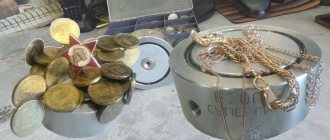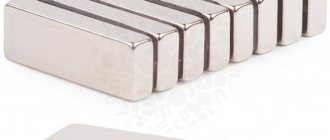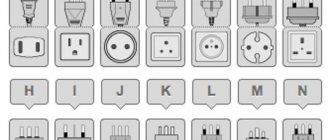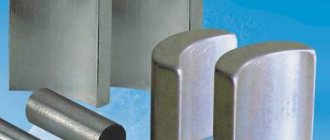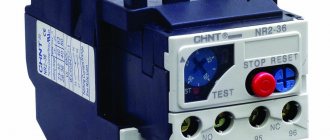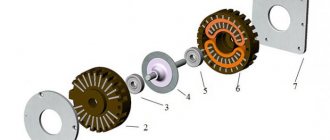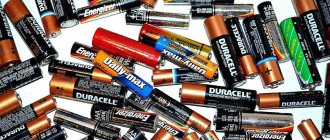Neodymium NdFeB magnets are the strongest permanent magnets available today. They are made from an alloy containing the rare earth material neodymium Nd, as well as iron and boron. Neodymium magnets have very high levels of residual magnetic induction and resistance to demagnetization. According to these indicators, they are many times superior to ordinary black, ferrite magnets. Which makes them much more attractive when used in products and equipment that require a strong magnetic field. The only serious drawback of these magnets is their rather high price. Moreover, over time, it tends to grow, since the needs of the world industry for strong magnets are also constantly growing. Technological progress is accelerating year by year, new models of smartphones, televisions, computers, navigators and similar high-tech gadgets are constantly being released, the production of which uses rare earth metals. The main supplier, so to speak, the leader of the global market, is the People's Republic of China, which controls up to 95% of the supply of rare earth materials, and, accordingly, their prices. Another sharp increase in prices was noted in the summer of 2022, when in 3 months the price of neodymium increased by more than 50 percent.
Technical characteristics of neodymium magnets
Magnetic characteristics are set at the magnet manufacturing stage and cannot be changed subsequently. The main parameters are residual magnetic induction and resistance to demagnetization (coercive force). Magnetic induction is measured in Tesla (Ts) and Gauss (G), 1 T = 10,000 Gauss. Neodymium magnets have a residual induction of about 1.2-1.4 T (12000-14000 Gas). It should be taken into account that such values can only be obtained by testing magnetic material in a closed circuit. When measuring the strength of the magnetic field on the surface of a magnet, the Teslameter usually shows from 200 to 500 mT (2000-5000 Gas). In addition, the readings of the residual magnetic induction strongly depend on the shape and size of the magnet - the larger it is, the stronger its magnetic field will be. Loss of magnetic properties over time usually does not exceed 2-3% over 10 years of operation (of course, subject to temperature conditions). A distinctive feature of neodymium magnets is their rather low operating temperature. With strong heating, demagnetization of the material begins, and the hotter it is, the faster this process occurs. The temperature at which a material begins to lose its magnetic properties is called the “Curie point.” In this case, a so-called “phase transition” occurs—the rapid destruction of the magnetic structure of the substance. Magnets made of ordinary grades of neodymium alloy, type N38, N42, etc. can withstand heating no higher than 80 degrees Celsius. This greatly limits their use in equipment subject to high heat - for normal operation in such conditions, additional cooling of the installation is required. There are also high-temperature grades of alloys, such as N38H (120°C), N38UH (180°C). If higher operating temperatures are required, then magnets made of Alnico material (UNDC) should be considered, which can withstand heating up to 550°C. Neodymium magnets most often have an anti-corrosion coating, nickel or zinc, less often epoxy. Magnets can be produced without any coating at all, but since they tend to rust in a humid environment, they are in much less demand. The direction of the magnetic field can be axial (along dimension h), diametrical (along dimension D) and radial (along dimension r).
Magnetization direction:
Magnetic characteristics of various neodymium alloys
Scope of application
Such magnets can be used not only in large industries, but also in everyday life. Most often they are used for the following purposes:
- Search work at the bottom of reservoirs. Magnets can be used to clean water bodies of scrap metal or search for them. They do not rust over time and can pull out objects from very deep places.
- Fastening metal objects. Thanks to its high strength, the magnet can handle a lot of weight. It is often used in workshops and factories for storing metal objects.
- Magnetization of some objects. Thanks to the powerful magnetic field, such a magnet can be used to magnetize scissors, needles, screwdrivers, etc. You can also use it to restore the power of some objects.
- Correcting dents in metal. Powerful neodymium magnets are often used to remove dents from metal cases.
- Purification of oils and petroleum products from chips and other metal contaminants.
The scope of application of neodymium magnets is much wider. It all depends on the needs and goals of a particular person. They are often used in heavy engineering, medicine, and the production of household appliances and furniture. They can act as powerful clamps. Even small magnets have high power.
Application of neodymium magnets
Neodymium magnets are widely used in various fields of human activity. Due to their high performance indicators, they are widely used in the production of radio equipment, measuring instruments, household appliances, medical equipment, mobile phones and other high-tech gadgets. These magnets are in high demand among wind generator manufacturers. Neodymium is also used to produce search magnets; for reference, magnetic fishing is an interesting hobby that is gaining popularity. To meet the needs of consumers, neodymium magnets are produced in a variety of shapes and sizes and are able to satisfy the most demanding demands. Magnets can be made in the form of a disk, cube, rod, cylinder, prism, bar, ring, sector or ball. In addition to standard geometric shapes, it is possible to manufacture more complex and bizarre configurations - the properties of the material allow this.
Magnetic susceptibility, magnetization, magnetic moment
To understand where the strength of a neodymium magnet comes from and how its field is created, it is necessary to gain an understanding of the phenomenon of permanent magnetization. One of its characteristics is magnetic susceptibility, which is a dimensionless quantity that shows the ability of a product to be magnetized when it enters the boundaries of a force field.
Magnetic susceptibility (C) is identical to the magnetization (J) of a particular substance at unit field strength. It allows you to determine the condition of a particular body before placing it in the field. After creating special force conditions, the object will receive a magnetic moment (M). The result of the impact will be the ability to determine magnetization as the magnetic moment of a unit volume. The formula for calculating the indicator is presented in the following form: J=M/V. It follows from this that the magnetization index is directly proportional to the voltage.
One of the stages of manufacturing NdFeB products is placing them in a force field with a high power rating. Due to significant magnetization, the adhesion force of neodymium magnets is very high.
As for the magnetic moment, this is a vector characteristic of the substance due to which the magnetic field was created. This indicator for a rare earth alloy is large, which also affects the adhesion force of a neodymium magnet.
Safety precautions for handling neodymium magnets
The main advantage of neodymium magnets is their colossal magnetic force, which also poses the greatest danger in inept or careless hands. The larger the magnet, the more harm it can cause to health. Large neodymium magnets, when colliding with each other, can seriously injure limbs caught between them at that moment. The impact will be approximately the same as hitting a sledgehammer or large hammer on an anvil. You need to understand that magnets close with terrible force and this happens in an instant. Even a person experienced in handling magnets does not always have time to react and withdraw his hand at the right moment. Another unpleasant feature is that if, after being hit with a hammer, a person simply gets a bruised finger, then in the case of magnets, after the blow, this finger remains clamped between them as if in a vice, and getting it out of there is quite a difficult task. If you try to simply pull your finger out of the magnets, then with a high degree of probability they will pinch off a piece of skin from the tip of your finger or tear off your nail. To avoid such consequences, keep large neodymium magnets away from each other and from iron objects , the recommended distance is at least 1 meter. If this does happen and the hand remains pinched between the magnets, then first of all you need to insert some spacers made of non-magnetic materials - plastic or wood - between the magnets; they will prevent further closing of the magnets. After this, you can try to pull your hand out yourself or wait for the Ministry of Emergency Situations employees to arrive. Small magnets, 20-40 mm in size, can also pose a danger and, if handled carelessly, leave bruises, cuts or hematomas on the hands. It is very important to protect children from contact with neodymium magnets. Even small magnets can pose a serious threat to a child's health. Swallowing small magnets can lead to extremely negative consequences, in which case you should immediately call an ambulance. Keep neodymium magnets out of the reach of children! Large neodymium magnets create a strong magnetic field around themselves; to avoid damage, keep them away from sensitive equipment - computers, external drives, watches, smartphones, pacemakers, navigation equipment, bank cards, etc. In addition, neodymium magnets are quite fragile and can crack under strong impacts, which is also unpleasant and costly in terms of money. Always use extreme caution and caution when handling powerful magnets.
What properties does a rare earth neodymium magnet have?
Magnetic energy in neodymium disks or bars can reach 400 kJ/m. cube, which is almost four times higher than that of ferrite analogues. Moreover, to tear off a tiny washer weighing 50 grams from an iron surface, a force of at least 20 kg will be required. It is almost impossible to tear large objects made of neodymium from the metal by hand.
The demagnetization performance is also amazing. Even after half a century of active use, the neodymium magnet alloy will retain most of its attractive properties, while ferrite will be almost completely demagnetized by that time. On the other hand, such devices also have their weaknesses, perhaps the most important of which is fragility.
To give neodymium products their fantastic characteristics, manufacturers are forced to resort to sintering technology, which does not yet allow achieving high strength. In order to somehow protect the neodymium magnet, iron boron and neodymium are coated with a copper-nickel protective layer. If handled carefully, this is sufficient, but dropping objects obtained by sintering or hitting them is not recommended. Otherwise, you will encounter another flaw - susceptibility to corrosion. Its manifestations may appear at the sites of chips or cracks.
The second drawback is the limited temperatures at which a neodymium magnet can be operated; it is better not to heat the composition above +80 °C. Although special grades of neodymium can withstand +200 °C without damage.
You can find other characteristics of our products on the website. Our managers will tell you in detail about the nuances of delivery, payment features and provide any information that interests you.
Residual magnetic induction
This indicator also relates to the power of the magnetic product - only when creating ideal conditions (closed-type magnetic system without losses and external influences). Its task is to demonstrate the flux density of field lines for a specific NdFeB ingot. The unit of measurement for remanent magnetic induction is milliTesla or kiloGauss.
For example, neodymium magnets N45 have an indicator of 1320-1380 (13.2-13.8), N50 - 1400-1450 (14.0-14.5), N42 - 1280-1320 (12.8-13.2).
Coercive force and physical indicators
We are talking about the maximum level of magnetic field that can disrupt the properties of the product. In other words, coercive force is the vulnerability of a metal to the effects of fields created by surrounding objects. It is important to take this indicator into account when using a magnet where it may be exposed to a large field. Coercive force is especially important if you plan to use the part as part of a particular unit. Indeed, surrounded by iron elements, a neodymium magnet may partially lose its characteristics over time.
In addition, the products we describe are classified according to several other indicators. For example:
- By electrical resistance and level of electrical conductivity;
- By hardness. On average, this parameter is about 600 Hv;
- By density, approximately 7.4 g/cm3;
- By Curie temperature: 310 – 340 oC
The company offers neodymium magnets, the parameters of which exactly correspond to the declared indicators.
